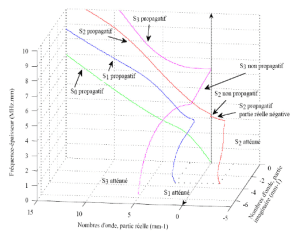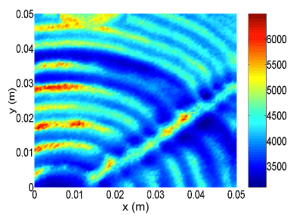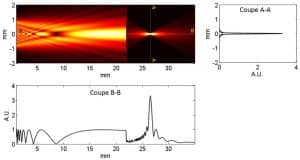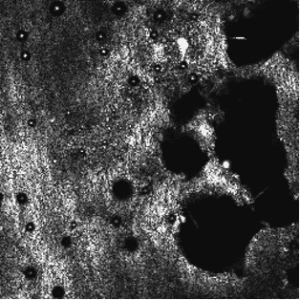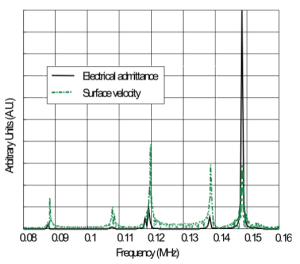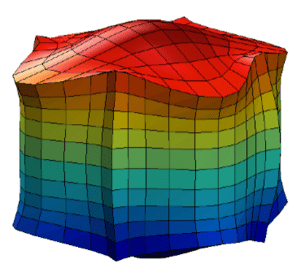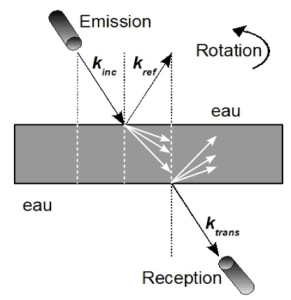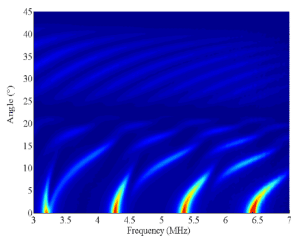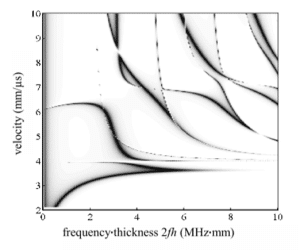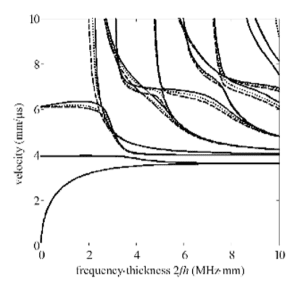
Emmanuel Le clezio
Présentation
I graduated in mathematics in 1995 and in electronics in 1997 from the Univ. of Rennes I, France, and received the Master of Acoustics from the Univ. of Le Mans, France, in 1998. I received my Ph.D. degree in mechanics (acoustics) from the Univ. of Bordeaux 1, France, in 2001. During 10 years I was an Assistant Professor of Physics and Telecommunications at the University of Tours (IUT-Blois) and is since 2011 Professor of Electronics at the University of Montpellier (UM). My research area concerns complex material characterisation by acoustic methods. I am a member of the French Society of Acoustics.
My research activities concern the following areas:
- Physical acoustics: Propagation of acoustic waves in homogeneous and inhomogeneous flat structures.
- Non Destructive Testing: Volume Waves; Guided Waves; Wave-Defect Interaction.
- Acoustic Microscopy: High-resolution imaging, Transducer Modeling; Signal processing.
- Non-Destructive Evaluation: Transmission Spectroscopy; Ultrasonic Resonance Spectroscopy.
- Complex materials: Photonic crystals; Biological materials (wood, muscle); Piezoelectric ceramics; Piezoelectric single crystals; Inhomogene materials (multilayer or gradient properties); Structure-property relationships.
- Signal Processing: Conventional methods and Artificial Intelligence.
ULTRASONIC NON-DESTRUCTIVE TESTING
The work carried out in the field of non-destructive testing concerns the propagation of ultrasonic waves of volume and guided within complex flat structures. Controlled media are metal plates, composites, or piezoelectric materials. Inhomogeneous in nature, they may have macroscopic defects or be subject to property gradients. Based on a modal decomposition method, my first work consisted in predicting the transmitted and reflected fields resulting from the interaction of a guided ultrasonic wave with an internal or external defect on an aluminum plate. The resolution, in the complex plane, of the Lamb wave dispersion equations (Figure 1.(a)) associated with boundary conditions at the defect level led to the determination of the complex diffraction coefficients occurring during the interaction of propagative Lamb waves with the free edge of the plate or internal vertical cracks or opening at the plate surface. This work with both theoretical and applicative components was then extended to the study of materials such as composites or wood. Since the complexity of these environments makes it difficult to interpret the signals propagating there, it may then be decided to use ultrasonic volume waves to map the transmission of flat samples in order to reveal the heterogeneity of the environment. For example, Figure 1(b) presents a mapping performed during the transmission of focused ultrasonic waves with a frequency of 500 kHz through a flat sample of fir immersed in water. The micro-structure of the medium is visible through the presence of rings whose modification of the arrangement is clearly indicative of a structural defect.
| (a)
|
(b)
|
|
| Figure 1 – (a) Symmetrical propagative, non-proparative and attenuated lamb modes in an aluminium plate. (b) Mapping of the velocities of ultrasonic waves propagating through a 4cm×4cm flat fir sample. | ||
The concepts and methods developed in the studies presented above have been applied in parallel to the field of non-destructive evaluation of passive or active materials such as inhomogeneous piezoelectric media.
ACOUSTIC MICROSCOPY
Acoustic microscopy is a high-resolution imaging technique with applications in the fiels of non-destructive testing of materials. Instruments are operating in routine, in industrial sites requiring strict quality controls, as well as universities’ research laboratories. Acoustic microscopy is mainly applied to the imaging of both sub-surface and surface micro-cracks, delaminations and topography. In the ACO team, my research is dedicated to the modeling of the transducer behaviors (Figure 2.(a)) and to signal processing allowing high-resolution imaging of industrial and biological media, see Figure 2.(b).
| (a)
|
(b)
|
|
| Figure 2 – (a) Acoustic fiel radiated by a focused transducer [A. Dekious, 2014]. (b) Acoustic image of a bone. | ||
NON-DESTRUCTIVE ULTRASONIC EVALUATION
With regard to piezoelectric materials, national and international research is conducted in close collaboration with research on ultrasonic devices and transducers, with a view to increasing the sensitivity and bandwidth of the devices produced. To this end, the dominance of PZT ceramics for ultrasonic transduction applications has been challenged since the early 2000s by the emergence of new compositions and technologies. Ternary compositions based on ferroelectric relaxers with properties superior to PZTs are emerging as well as lead-free ceramics. In this environment, my research work has focused on two main areas of research:
- On the one hand, the development of acoustic methods for the functional characterization of ceramics and electroactive structures, the objective of which is to provide industrialists, manufacturers of ultrasonic transducers, with tools for controlling the quality of their materials before implementation. In addition, the identified characteristics can be introduced as input parameters into transducer behaviour simulation programs and can therefore be used to design new products. In order to minimize inconsistencies that may appear within reconstructed tensors, particular emphasis is placed on the development of characterization methods that allow the tensor properties of materials to be measured from a single sample.
- On the other hand, the study of the relationships between the microstructure and the functional properties of ceramics and single crystals, with a view to applications to ultrasonic transduction. Its purpose is to understand and explain the origin of certain properties to help in the development and optimization of new active materials and processes.
Resonance Spectroscopy
The classical electrical characterization of piezoelectric materials is based on the comparison of the measurement of the electrical impedance of the sample with the results given by an equivalent electrical diagram of the KLM type. The main approximation of these characterizations is that the model only takes into account a mono-modal behaviour that is a function of the geometry of the sample considered. The advantage of this method is that it is possible to take into account the acoustic environment (back environment, adhesive layers, electrodes, adapter blades, front environment) and the electrical environment (connection cables, contact impedance). A complementary approach to the equivalent electrical diagram consists in studying the vibrations of a parallelepipedic sample of piezoelectric material. It requires a three-dimensional modeling of the electroacoustic parameters and allows the complete characterization of the piezoelectric tensor of the material. The principle consists in measuring, using an impedance analyzer, the electrical resonances and, by a laser interferometer, the mechanical resonances of a piezoelectric cube (Figure 2.(a)). In order to identify the properties of the material, a study of the sensitivity of each vibration mode to the desired constants is carried out and the measurements are compared with simulations from an energy model. This one allows, moreover, to represent the modal deformities of the resonances of the cube (figure 3.(b)). This work has recently been extended to the characterization of a complex biological material, Wood, whose identification of the dispersion of its mechanical characteristics is a major academic and industrial challenge.
| (a)
|
(b)
|
|
| Figure 3 – (a) Electrical and mechanical resonances of a piezoelectric cube of PMN- 34.5%PT. (b) Modal deformation of a mechanical resonance of the cube. | ||
Transmission Spectroscopy
As with the previous method, this research axis aims to develop a complete procedure for characterizing the elastic, piezoelectric and dielectric tensors of the materials used in ultrasonic transducers. Applicable to larger samples, the method is based on measurements of ultrasonic wave transmission coefficients through flat structures. Previously applied to the characterization of passive viscoelastic materials, it was first extended to piezoelectric materials. A plane wave incident on a piezoelectric plate generates, within the material, several acoustic waves that pass through it following different acoustic paths (see Figure 4.(a)). The measurement, in a wide frequency band, of the experimental resonances obtained by varying the angle of incidence (Figure 4.(b)) then provides information on the properties of the material in all these paths. To fully characterize the material, these results are then compared with numerical simulations of transmission coefficients from theoretical models.
| (a)
|
(b)
|
|
| Figure 4 – (a) Transmission of a plane wave through an immersed plate. (b) Evolution of the transmission coefficients of a plane wave through an immersed PZT-type ceramic plate as a function of frequency and angle of incidence. | ||
These works have finally been extended to the modeling of wave propagation through multilayer piezoelectric structures and the consideration of property gradients within these structures (figure 5.(b)).
| (a)
|
(b)
|
|
| Figure 5 – (a) Dispersion curves of guided waves within a lithium niobate plate (X section at 45o) – Influence of metallization. (b) Evolution, as a function of frequency and angle of incidence, of the transmission coefficients of a plane wave through an immersed plate exhibiting a gradient of properties.
PUBLICATIONS : For more details, see: here.
|
||
